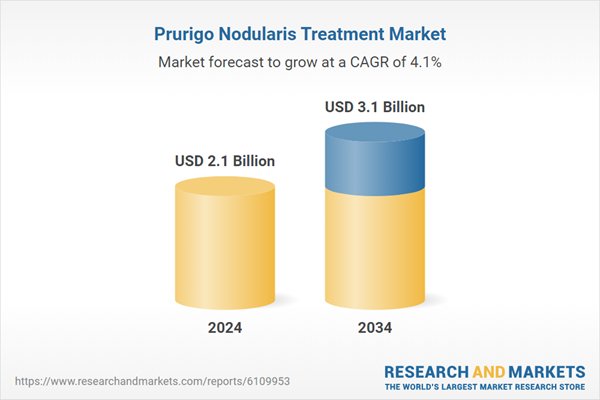What’s also driving the demand is the debilitating nature of the disease, which severely affects the quality of life and often demands long-term treatment. As awareness grows, both patients and medical professionals are more inclined to pursue medical solutions that target not only the symptoms but also the root causes of the condition. In recent years, pharmaceutical companies have ramped up investments in the research and development of therapies that aim to break the itch-scratch cycle and mitigate chronic skin inflammation. Innovative biologics targeting the underlying mechanisms of PN are gradually changing the landscape of care, offering more targeted and durable outcomes compared to traditional therapies.
The influx of funding from private investors and public healthcare initiatives has provided a solid foundation for future advancements. These resources are enabling the launch and development of biologic-based treatments that have demonstrated promising results in clinical studies. The availability of new targeted options is shifting prescriber behavior, with biologics gradually becoming a preferred choice in the treatment paradigm. This trend is expected to further accelerate as more advanced therapies gain regulatory approval and enter the market.
The market for prurigo nodularis treatment includes a wide range of medications aimed at managing inflammation, itch, and skin lesions. These include corticosteroids, antihistamines, emollients, capsaicin creams, and biologics. Among these, corticosteroids led the global market in 2024, with a value of USD 650.4 million. Their widespread use can be attributed to their strong anti-inflammatory effects, affordability, and accessibility. Often used as first-line therapy, corticosteroids are prescribed for both short-term flare-ups and long-term management of mild to moderate PN. Their availability in both prescription and over-the-counter formats adds to their appeal, making them a go-to option for outpatient care and self-management.
Topical treatments accounted for 55.3% of the market share in 2024, highlighting their role in localized symptom management. These therapies offer the advantage of targeted application directly to affected skin areas, minimizing systemic exposure and adverse effects. Products such as emollients, corticosteroid creams, and capsaicin-based formulations are commonly used and are favored for their ease of use and relatively low cost. Their accessibility through both healthcare providers and retail pharmacies reinforces their continued dominance.
The prescription drug category is poised for notable growth, expected to expand at a CAGR of 3.8% over the forecast period. This segment is being driven by a shift toward physician-supervised treatment plans and the increasing use of high-efficacy drugs like immunosuppressants, calcineurin inhibitors, and biologics. As more patients seek medical consultation for PN’s severe symptoms, the demand for prescription-only therapies is rising. Biologic agents in particular are contributing to this momentum, as they offer long-term control and are specifically designed for complex cases requiring consistent medical oversight.
Hospital pharmacies held a leading position in 2024 and are projected to reach USD 1.6 billion by 2034. These facilities play a crucial role in dispensing specialized therapies such as biologics and injectable corticosteroids, particularly for patients undergoing continuous treatment or managing severe PN. They often operate under centralized procurement systems that allow for streamlined access to high-cost medications. Moreover, their integration with dermatology and immunology departments ensures proper treatment monitoring and dosage adherence, making them a key distribution channel for advanced PN care.
North America led the global market with a 41.3% share in 2024, with the United States alone accounting for USD 816.6 million. Growth in this region is supported by a well-developed healthcare system, high diagnosis rates, and access to cutting-edge treatments. The demand for advanced therapies continues to grow as more patients are evaluated in clinical settings and awareness initiatives gain traction.
The competitive landscape is transforming. While traditional therapies such as antihistamines and corticosteroids continue to have a presence, the entry of biologics has begun to reshape treatment dynamics. Pharmaceutical leaders and biotech firms alike are focused on the development of disease-specific therapies, creating a shift toward long-term, systemic treatments that go beyond symptom relief. As a result, market competition is intensifying in regions with strong regulatory frameworks and commercial infrastructures.
Comprehensive Market Analysis and Forecast
- Industry trends, key growth drivers, challenges, future opportunities, and regulatory landscape
- Competitive landscape with Porter’s Five Forces and PESTEL analysis
- Market size, segmentation, and regional forecasts
- In-depth company profiles, business strategies, financial insights, and SWOT analysis
This product will be delivered within 2-4 business days.
Table of Contents
Companies Mentioned
- Bayer
- Galderma
- GlaxoSmithKline
- Johnson & Johnson
- Merck
- Pfizer
- Rugby Pharma
- Sanofi
- Takeda Pharmaceuticals
- Teva Pharmaceutical Industries
- Trevi Therapeutics
- VYNE Therapeutics
Table Information
| Report Attribute | Details |
|---|---|
| No. of Pages | 135 |
| Published | June 2025 |
| Forecast Period | 2024 - 2034 |
| Estimated Market Value ( USD | $ 2.1 Billion |
| Forecasted Market Value ( USD | $ 3.1 Billion |
| Compound Annual Growth Rate | 4.1% |
| Regions Covered | Global |
| No. of Companies Mentioned | 12 |









